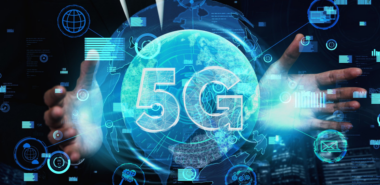Super Bowl LIII (that’s 53 for those who aren’t familiar with the NFL’s love of Roman numerals) is complete! In a particularly defensive game, with only one touchdown, Tom Brady and the New England Patriots defeated the Los Angeles Rams, led by the youngest coach ever in Super Bowl history, Sean McVay. It was a monumental occasion for the Patriots, winning their sixth Super Bowl title, tying them for most all time with the Pittsburgh Steelers. Commercials during the halftime break cost approximately $5million per 30 seconds, thanks to an expected global audience of well over 100 million viewers. Of these viewers, it’s possible that many of them might not have realized the incredible technology that was in use throughout the action, particularly thanks to the new stadium that played host to the game.
Mercedes-Benz Stadium in Atlanta is the most innovative stadium in the US, having opened in August 2017, bursting with the latest technology to keep fans and players permanently entertained. So, what wonders were on show at the game?
Firstly, the designers of the new stadium have clearly taken a very dedicated approach to connectivity. Most of us have experienced connectivity problems at large sports events – when you’re next to tens of thousands of other people trying to use the stadium’s WiFi or their mobile network, it can be seemingly impossible to establish a secure connection. This apparently was not the case for Super Bowl 53! Approximately 2,000 wireless access points have been installed, which will provide the equivalent of over 280,000 square feet of outdoor coverage (roughly five football fields). The stadium also boasts almost 4,000 miles of fiber optics and 90 miles of audio cables – laid out in a line, this would be enough to go from Atlanta, to the home of the Rams in Los Angeles, and back again!
But the good news for fans doesn’t stop there. Thanks to a new app, fans are now given individual notifications, alerts and updates based on their location. Mobile ticketing has been introduced, and even a new API-powered parking chat bot that will help fans find a good spot.
But was it just the fans that that benefited from the latest innovations in AI and IoT technology at the Super Bowl? What about the players and coaches?
If anything, the players benefited the most of all. The NFL has seized the IoT opportunity with both hands, using a range of sensors, worn by the players and placed inside the footballs themselves, to measure player speed and overall movement. These RFID sensors have been inside NFL team players’ shoulder pads for the last four seasons and have provided coaches with a wealth of data on the fitness, power and overall performance of each player on the field. And it’s not just the coaches that are given access to the data; media can also access the stats and keep fans up to date with which players are truly the fastest (often a topic of heated debate).
As you can imagine, power, speed and performance aren’t the only thing the coaches and team doctors will care about. Head injuries have been an important issue for the NFL, particularly on the its biggest stage, the Super Bowl, for quite some time. A range of innovative, connected devices for monitoring head impacts are available to teams now, and were in use on Sunday during the game. For example, X2 Biosystems has developed two patches to evaluate player concussions; rather than a sensor placed inside the helmet, these patches are stuck just behind the ear and within a player’s mouth-guard. During the game, they relay impact data in real time to the team’s doctors, alerting them to anything hazardous to the player’s health. Other companies such as Linx IAS also offer monitoring in this area, relying on sensors worn in a headband, resting against a player’s skull.
Of course, we mustn’t forget that a lot of new technology in the NFL has been in use leading up to the Super Bowl. Players have been training for years to reach this point in their career, using a variety of new innovations. VR is now playing an important role for players when it comes to training; Strivr was introduced to the NFL thanks originally to the Dallas Cowboys, whose players now use the headsets to watch pre-recorded plays in 360 degrees vision, helping them prepare for the opposition. Strivr headsets are now used throughout the NFL and will likely be in use right now as you read this, as players prepare for the next Super Bowl and the seasons to come.
So there you have it! All you have to do is get ready for the next season now and enjoy the blend of athleticism, skill and technology in action throughout the league… What do you think of the growing use of IoT, AI and VR technology in the sporting world? Let us know, by tweeting to us @Gemalto.


